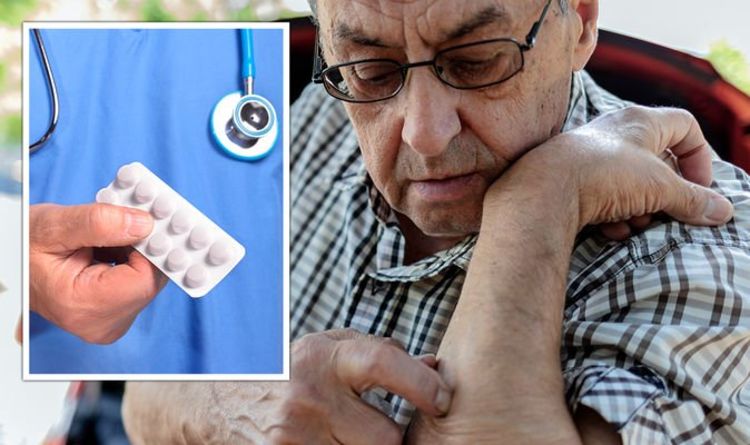Statins side effects: Three ‘common’ reactions when trying to lower cholesterol
Statins: How the drug prevents heart attacks and strokes
We use your sign-up to provide content in ways you’ve consented to and to improve our understanding of you. This may include adverts from us and 3rd parties based on our understanding. You can unsubscribe at any time. More info
Although many people can tolerate statins without any adverse reactions, for some people, “common” skin complications can arise. For instance, a rash might develop. Experts at WebMD cautioned that statins can lead to flushing, or lead to acne. The Mayo Clinic added that hives could develop – a type of rash, otherwise known as urticaria.
Hives may be skin-coloured, reddish on light skin, or purplish on darker skin tones.
They can take on a round, oval, or worm-shaped appearance, that can range from the size of a pea to as large as a dinner plate. In addition, hives may be mildly or severely itchy.
Statins may also lead to other reactions that do not appear on the skin, WedMD added.
Other side effects may include:
- Headache
- Difficulty sleeping
- Muscle aches, tenderness, or weakness (myalgia)
- Drowsiness
- Dizziness
- Nausea or vomiting
- Abdominal cramping or pain
- Bloating or gas
- Diarrhoea
- Constipation
- Low levels of blood platelets.

Although, “less common”, some people might experience hair loss, nausea, as well as pins and needles when taking statins.
It is also possible to develop liver inflammation, which can make you feel like you have the flu.
Pancreas inflammation, on the other hand, can lead to stomach pain.
“Statins also carry warnings that memory loss, mental confusion, neuropathy, high blood sugar, and type 2 diabetes are possible side effects,” added WebMD.
If you are concerned about any side effects, do contact your doctor to discuss your treatment plan.
At times, the dosage can be amended and if needs be, a different type of statin might be prescribed.
There are five main types of statins:
- Atorvastatin (Lipitor)
- Fluvastatin (Lescol)
- Pravastatin (Lipostat)
- Rosuvastatin (Crestor)
- Simvastatin (Zocor).
While statins are effective at lowering cholesterol levels, the medication can only do so much.

The NHS recommends “lifestyle changes” to help reduce cholesterol levels in addition to medication.
This involves “eating a heathy, balanced diet” – but what does this really involve?
To fulfil this criteria, one needs to eat “at least five portions of a variety of fruit and vegetables every day”.
A person needs to “base meals on higher fibre starchy foods”, such as: potatoes, bread, rice, or pasta.

Other dietary requirements include beans, pulses, fish, eggs, meat and other protein.
There are certain foods that should be limited too, such as foods that are high in fat, salt, and sugar.
By eating more healthily, you should be able to maintain your weight more easily, especially if you work out regularly.
Exercising every day, at a high enough intensity to get the heart beating at a faster rate, is one of the best ways you can lower your cholesterol.
Source: Read Full Article
